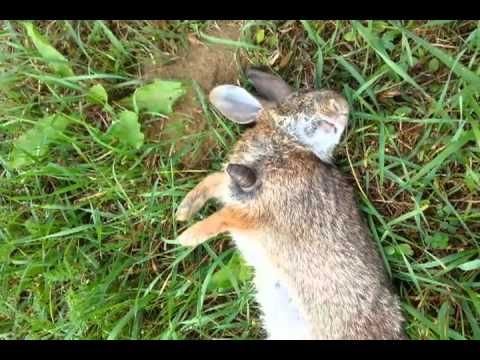
Wolf worms are actually the larvae of a certain type of fly, primarily *Cuterebra*. They burrow into their hosts, causing all sorts of reactions and adaptations. But why rabbits, squirrels, and other animals? What do these hosts provide? Let’s dive into the interesting world of wolf worms and discover how they interact with their furry roommates.
What Are Wolf Worms?
Wolf worms, scientifically known as **Cuterebra spp.**, are the larvae of botflies. They’re not your typical garden variety pest; these larvae are unique because they live inside mammals, often causing confusion and discomfort. Think of them as unwelcome tenants—most of the time, they’re just trying to survive, but their presence can lead to some serious issues for their hosts.
These larvae usually enter through the skin when an animal brushes against the eggs laid by adult botflies. Once inside, they can grow quite large, sometimes up to two inches long. Imagine having a worm living under your skin! While it sounds horrifying, these parasites can go unnoticed for a while, leading to some serious, yet often preventable, health problems for their hosts.
Common Hosts of Wolf Worms
Wolf worms are opportunistic and can infest a range of animals. Some of their common hosts include:
- Rabbits: These cute creatures are often seen jumping through fields, but they can fall victim to wolf worms when they least expect it.
- Squirrels: With their active lifestyles, squirrels are frequent targets. They might not notice the creeping invaders until it’s too late.
- Rats and Mice: Smaller rodents also get caught in the crosshairs, creating a one-sided relationship that doesn’t favor the host.
You might be wondering why wolf worms choose these specific hosts. It really comes down to habitat and behavior. These animals often live in areas where the botflies lay their eggs, making it easy for the larvae to find their way inside.
How Do Wolf Worms Affect Their Hosts?
Honestly, having a wolf worm inside can cause quite a stir in a host’s life. Initially, animals might not even notice the presence of these larvae. However, as they grow, the symptoms can start to surface. Here’s what often happens:
1. **Skin Irritation:** As the larvae grow, they can cause inflammation and pain at the entry site. Imagine having a constant itch that just won’t go away.
2. **Behavioral Changes:** An animal that’s generally active may become lethargic and withdrawn due to discomfort. You can only imagine how frustrating that must be for an agile squirrel who loves to scamper around.
3. **Health Risks:** In some cases, the presence of wolf worms can lead to secondary infections. This is particularly concerning for smaller or already weakened animals.
It’s a reminder of how tricky life in the wild can be. While these worms are just trying to survive, their hosts often bear the brunt of the consequences.
Identifying Wolf Worm Infestations
So, how do you spot if a rabbit, squirrel, or another animal has been infested by wolf worms? Here are some signs to look for:
- Visible Lesions: You might notice bumps or sores on the skin, especially in areas where the animal’s fur is thin.
- Behavioral Changes: Is your pet rabbit acting unusually quiet or avoiding certain activities? This could be a clue.
- Persistent Scratching: If an animal is scratching at a particular spot continuously, it might be a sign of irritation caused by wolf worms.
If you come across these signs, it’s really important to take action. Though it’s crucial to act quickly, it’s also vital to consult a veterinarian for the proper diagnosis and treatment options.
Treatment and Prevention
If a pet or wild animal has a wolf worm infestation, treatment usually involves vet intervention. Here’s what you can expect:
1. **Removal:** A veterinarian will often remove the larvae manually. It’s a delicate procedure that requires expertise to avoid complications.
2. **Medication:** After removal, animals may need antibiotics to treat any secondary infections that arise from the infestation.
But, of course, prevention is even better! Some easy ways to reduce the risk of wolf worms include:
- Regular Grooming: Especially for pets, keeping fur clean and well-groomed can help detect any unusual bumps.
- Limit Exposure: If you’re in an area known for high wolf worm activity, keep pets indoors or supervised outside.
- Routine Check-ups: Regular vet visits can help catch any health issues before they become serious.
By keeping a watchful eye, you can help protect vulnerable animals from these uninvited guests.
Are Wolf Worms Dangerous to Humans?
You might be relieved to know that wolf worms don’t typically infest humans. However, the related botflies can have some interesting interactions with us. Humans can become a host for other types of fly larvae if they come into contact with them, but it’s not as common as with rabbits or squirrels. That said, it’s always wise to be cautious and avoid any direct contact with wild animals that might be housing these larvae.
While it’s fascinating to learn about these interactions in nature, it’s also a stark reminder of the importance of monitoring wildlife and domestic pets. The more we understand, the better we can help.
The Bigger Picture
Wolf worms might seem like an odd aspect of wildlife, but they play a role in the ecosystem. By understanding their lifecycle and their hosts, we can gain insight into the health of wildlife populations and even contribute to conservation efforts. It’s a cycle of life, albeit a tricky one.
In conclusion, wolf worms are an interesting but challenging part of nature, affecting a range of hosts from rabbits to squirrels. By being informed about these interactions, we can help protect our furry friends while also appreciating the complex web of life that exists around us. Let’s keep our eyes open and take action to ensure the safety and health of our wild companions.
